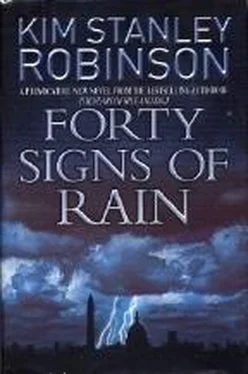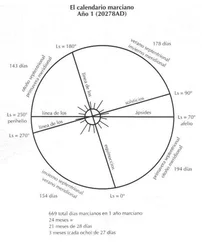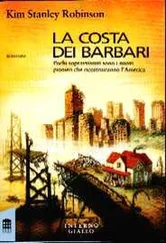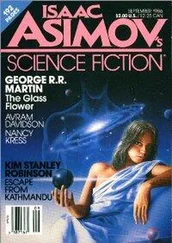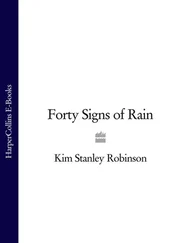“Your hand would hurt.”
“Big fucking deal.”
“You might get phlebitis if it was your leg. Isn’t that how it happens?”
“Well use the hand then.”
“Interesting,” Leo said. “Heck, let’s try it at least. The other options look worse to me. Although we should probably try the mice on the various limits on volume and dosage in the original experiment, just to be sure.”
So the meeting petered out, and they wandered off to go home, or back to their desks and benches, thinking over plans for more experiments. Getting the mice, getting the time on the machines, sequencing genes, sequencing schedules; when you were doing science the hours flew by, and the days, and the weeks. This was the main feeling: there was never enough time to do it all. Was this different from other kinds of work? Papers almost written were rewritten, checked, rewritten again—finally sent off. Papers with their problems papered over. Lots of times the lab was like some old-fashioned newspaper office with a deadline approaching, all the starving journalists churning out the next day’s fishwrap. Except people would not wrap fish with these papers; they would save them, file them by category, test all their assertions, cite them—and report any errors to the authorities.
Leo’s THINGS TO DO list grew and shrank, grew and shrank, grew and then refused to shrink. He spent much less time than he wanted to at home in Leucadia with Roxanne. Roxanne understood, but it bothered him, even if it didn’t bother her.
He called the Jackson labs and ordered new and different strains of mice, each strain with its own number and bar code and genome. He got his lab’s machines scheduled, and assigned the techs to use them, moving some things to the front burner, others to the back, all to accommodate this project’s urgency.
On certain days, he went into the lab where the mouse cages were kept, and opened a cage door. He took out a mouse, small and white, wriggling and sniffing the way they did, checking things out with its whiskers. Quickly he shifted it so that he was holding it at the neck with the forefingers and thumbs of both hands. A quick hard twist and the neck broke. Very soon after that the mouse was dead.
This was not unusual. During this round of experiments, he and Brian and Marta and the rest of them tourniqueted and injected about three hundred mice, drew their blood, then killed and rendered and analyzed them. That was an aspect of the process they didn’t talk about, not even Brian. Marta in particular went black with disgust; it was worse than when she was premenstrual, as Brian joked (once). Her headphones stayed on her head all day long, the music turned up so loud that even the other people in the lab could hear it. Terrible, ultraprofane hip-hop rap whatever. If she can’t hear she can’t feel, Brian joked right next to her, Marta oblivious and trembling with rage, or something like it.
But it was no joke, even though the mice existed to be killed, even though they were killed mercifully, and usually only some few months before they would have died naturally. There was no real reason to have qualms, and yet still there was no joking about it. Maybe Brian would joke about Marta (if she couldn’t hear him), but he wouldn’t joke about that. In fact, he insisted on using the word “kill” rather than “sacrifice,” even in write-ups and papers, to keep it clear what they were doing. Usually they had to break their necks right behind the head; you couldn’t inject them to “put them to sleep,” because their tissue samples had to be clear of all contaminants. So it was a matter of breaking necks, as if they were tigers pouncing on prey. Marta was as blank as a mask as she did it, and very deftly too. If done properly it paralyzed them so that it was quick and painless—or at least quick. No feeling below the head, no breathing, immediate loss of mouse consciousness, one hoped. Leaving only the killers to think it over. The victims were dead, and their bodies had been donated to science for many generations on end. The lab had the pedigrees to prove it. The scientists involved went home and thought about other things, most of the time. Usually the mice deaths occurred in the mornings, so they could get to work on the samples. By the time the scientists got home the experience was somewhat forgotten, its effects muted. But people like Marta went home and dosed themselves with drugs on those days—she said she did—and played the most hostile music they could find, 110 decibels of forgetting. Or went out surfing. They didn’t talk about it to anyone, at least most of them didn’t—this was what made Marta so obvious, she would talk about it—but most of them didn’t, because it would sound both silly and vaguely shameful at the same time. If it bothered them so much, why did they keep doing it? Why did they stay in that line of business?
But—that line of business was doing science. It was doing biology, it was studying life, improving life, increasing life! And in most labs the mouse-killing was done only by the lowliest of techs, so that it was only a temporary bad job that one had to get through on the way to the good jobs.
Someone’s got to do it, they thought.
In the meantime, while they were working on this problem, their good results with the HDL “factory cells” had been plugged into the paper they had written about the process, and sent upstairs to Torrey Pines’ legal department, where it had gotten hung up. Repeated queries from Leo got the same e-mailed response: still reviewing—do not publish yet.
“They want to find out what they can patent in it,” Brian said.
“They won’t let us publish until we have a delivery method and a patent,” Marta predicted.
“But that may never happen!” Leo cried. “It’s good work, it’s interesting! It could help make a big breakthrough!”
“That’s what they don’t want,” Brian said.
“They don’t want a big breakthrough unless it’s our big breakthrough.”
“Shit.”
This had happened before, but Leo had never gotten used to it. Sitting on results, doing private science, secret science—it went against the grain. It wasn’t science as he understood it, which was a matter of finding out things and publishing them for all to see and test, critique, put to use.
But it was getting to be standard operating procedure. Security in the building remained intense; even e-mails out had to be checked for approval, not to mention laptops, briefcases, and boxes leaving the building. “You have to check in your brain when you leave,” as Brian put it.
“Fine by me,” Marta said.
“I just want to publish,” Leo insisted grimly.
“You’d better find a targeted delivery method if you want to publish that particular paper, Leo.”
So they continued to work on the Urtech method. The new experiments slowly yielded their results. The volumes and dosages had sharp parameters on all sides. The “tourniquet injection” method did not actually insert very many copy DNAs into the subject animals’ endothelial cells, and a lot of what was inserted was damaged by the process, and later flushed out of the body.
In short, the Maryland method was still an artifact.
By now, however, enough time had passed that Derek could pretend that the whole thing had never happened. It was a new financial quarter; there were other fish to fry, and for now the pretense could be plausibly maintained that it was a work in progress rather than a total bust. It wasn’t as if anyone else had solved the targeted nonviral delivery problem, after all. It was a hard problem. Or so Derek could say, in all truth, and did so whenever anyone was inconsiderate enough to bring the matter up. Whiners on the company’s website chat room could be ignored as always.
Читать дальше
Конец ознакомительного отрывка
Купить книгу
